Have you ever wondered, why do dogs have wet noses? It’s a question that sparks curiosity among dog lovers and pet owners alike. The truth behind this unique feature is not only fascinating but also essential for understanding canine health. A dog’s wet nose isn’t just cute; it plays a crucial role in their sense of smell and overall well-being. But what makes it so special? Is it just a quirky characteristic, or does it serve a deeper purpose? Studies have shown that the moisture on your dog’s nose helps to enhance their olfactory abilities, making them experts in scent detection. So, when you ask, why does my dog have a wet nose, remember, it’s more than just a delightful trait; it’s an incredible adaptation. If you’re intrigued by the science behind this phenomenon and want to learn more about how a dog’s nose works, you’re in the right place! Join us as we uncover the secrets behind those wet noses and explore their surprising benefits. Get ready to dive into the captivating world of canine anatomy and discover the fascinating truth about why your furry friend’s nose is always damp!
The Science Behind Wet Noses: Why Do Dogs’ Noses Stay Moist?

Dogs are often know for their adorable wet noses. But have you ever wonder why they are moist? There’s actually a fascinating science behind it, and it’s not just for show. Wet noses play an important role in a dog’s health and behavior, and understanding this can enrich your relationship with your furry friend.
The Biological Purpose of a Dog’s Wet Nose
The moisture on a dog’s nose serves several important purposes. First, it helps them to smell better. Dogs have an incredible sense of smell, and their wet noses help to capture scent particles from the air. When a dog’s nose is moist, it can absorb these particles more effectively, which is why dogs have such an impressive ability to sniff out things we humans can’t even perceive.
How Dogs Regulate Temperature
Another reason why dogs have wet noses is temperature regulation. Just like humans sweat to cool down, dogs also need a way to manage their body temperature. Their noses contain a network of blood vessels that helps to cool the blood as it flows through. When a dog’s nose is moist, it can help dissipate heat more efficiently.
The Evolutionary Aspect
Historically, dogs descended from wolves, who relied heavily on their sense of smell for hunting and survival. A wet nose was advantageous for these ancestors, allowing them to track prey more effectively. This trait has been passed down through generations, and it’s one of the many characteristics that makes dogs such skilled hunters.
Why Do Dogs Have Wet Noses? The Fascinating Truth
Here are some interesting facts about why dogs have wet noses:
- Scent Detection: A wet nose can absorb scent chemicals better, enhancing a dog’s ability to detect odors.
- Health Indicator: A dog’s nose can indicate its health. A healthy dog typically has a moist nose, while a dry nose could signal dehydration or illness.
- Communication Tool: Dogs often use their noses for social interactions. A moist nose can be more inviting, helping to convey emotions and intentions to other dogs.
What Factors Influence Nose Moisture?
Several factors can affect how wet a dog’s nose is. These include:
- Weather Conditions: Humid weather often leads to wetter noses, while dry environments can cause noses to dry out.
- Activity Level: After playtime or exercise, a dog’s nose may be more moist due to increased blood flow and hydration.
- Health Status: Illness, dehydration, or even age can lead to changes in nose moisture. It’s always wise to consult a vet if there are sudden changes.
Myth-Busting: Common Misconceptions
There are plenty of myths surrounding the reason why dogs have wet noses. Some common misconceptions include:
- Cold Weather: Many think that a wet nose is a sign of a cold dog. In reality, a moist nose is normal for healthy dogs, regardless of the weather.
- Nose Color: A dog’s nose color doesn’t determine moisture levels. Both black and pink noses can be wet or dry.
- Breed Specificity: All dog breeds can have wet noses; it’s not limited to certain types.
The Importance of Nose Care
Taking care of your dog’s nose is essential for its overall health. Here are some tips for ensuring a healthy nose:
- Hydration: Make sure your dog drinks enough water. Dehydration can lead to a dry nose.
- Protection: In extreme weather, consider using dog-safe moisturizers to prevent cracking or dryness.
- Regular Vet Check-ups: Keep an eye on changes in your dog’s nose. A significant change in moisture can indicate health issues.
Quick Facts About Dog Noses
- Dogs have more scent receptors than humans, approximately 220 million compared to our 5 million.
- Each dog’s nose print is unique, much like human fingerprints.
- Dogs can smell certain diseases, including cancer and diabetes, through changes in body odor.
The science behind why dogs have wet noses is not only fascinating but also crucial for understanding our furry companions better. Their moist noses serve multiple functions, from enhancing their sense of smell to regulating their body temperature. While a wet nose is a common sight, it’s essential to pay attention to any changes, as they can indicate health issues. Knowing why dogs have wet noses helps us appreciate our pets even more and ensure they lead happy, healthy lives.
Top 5 Reasons Dogs Have Wet Noses: More Than Just Cute!
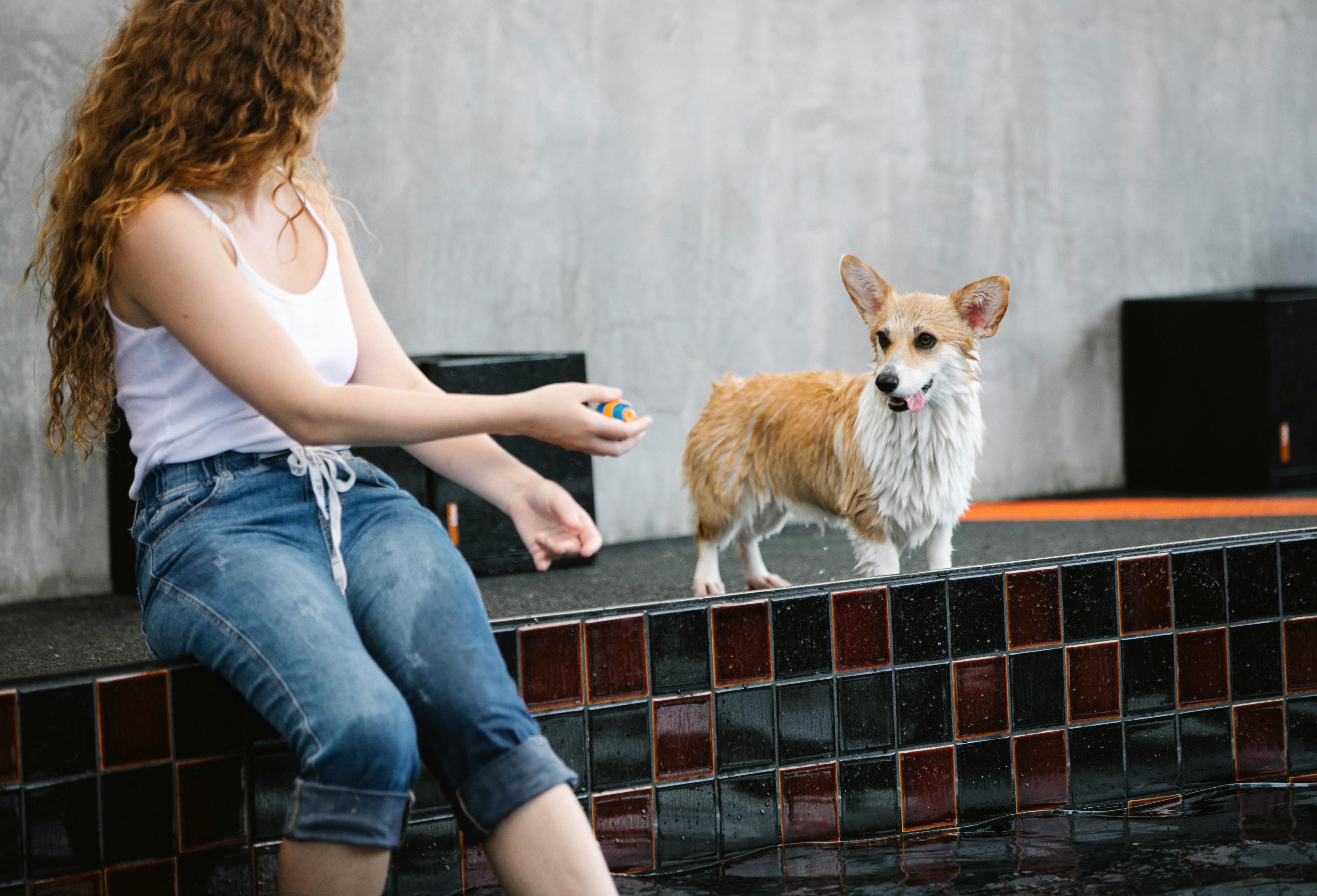
Dogs has been man’s best friend for centuries. There’s something special about their wagging tails and moist noses that brings joy to many. But have you ever pondered why do dogs have wet noses? It’s not just an adorable trait! There’s actually a fascinating truth behind it. Here are the top 5 reasons why dogs have wet noses that goes beyond their cuteness factor.
1. Temperature Regulation
One of the main reasons dogs have wet noses is to help them regulate their body temperature. Unlike humans who sweat, dogs do it differently. They pant to cool down, but their wet noses also plays a significant role. The moisture on their noses evaporates, helping to lower their overall temperature.
- Dogs’ noses are often cooler than their body temperature.
- Wetness on a dog’s nose can help maintain a balanced temperature, especially during warm weather.
2. Enhanced Sense of Smell
Dogs have an incredible sense of smell — way better than humans. A wet nose helps to enhance this ability. When dogs sniff, the moisture on their noses traps scent particles. This makes it easier for their olfactory receptors to detect different smells.
- A dog’s sense of smell is estimated to be 10,000 to 100,000 times more sensitive than humans.
- Wet noses can capture scents more effectively than dry noses.
3. Communication Tool
Dogs are social creatures and use their noses to communicate with each other and with humans. A wet nose can signal a variety of emotions or intentions. For instance, a dog may nuzzle you with its wet nose to show affection or to get your attention.
- Dogs often greet each other by sniffing each other’s noses.
- A wet nose can indicate a dog’s excitement or happiness.
4. Health Indicator
A dog’s nose can also be a good indicator of its health. While a wet nose is generally a sign of a healthy dog, changes in the moisture level can indicate potential health issues. A dry nose, for example, can sometimes be a sign of dehydration or illness.
- Healthy dog noses are moist and cool to the touch.
- If a dog’s nose becomes excessively dry or cracked, visiting a vet may be necessary.
5. Evolutionary Trait
Historically, dogs’ wet noses may have evolved as a survival mechanism. Early canines relied on their sense of smell to hunt and find food. A moist nose was beneficial in capturing scents and tracking prey. This evolutionary trait has persisted through generations, giving modern dogs their wet noses today.
- Early dogs had to hunt for their food, relying heavily on scent.
- Wet noses may have provided an evolutionary advantage in survival.
Fun Facts About Dogs’ Noses
- Did you know that each dog has a unique nose print, just like human fingerprints? This means that you can actually identify dogs by their noses!
- The texture of a dog’s nose can also change with the seasons; they might be drier in winter and wetter in summer.
- Some breeds, like Bulldogs and Pugs, have flatter faces which can affect how effective their noses are at capturing scents.
Practical Tips for Dog Owners
- Regular Vet Check-ups: Keep an eye on your dog’s nose condition. Regular vet visits can help catch any potential health issues early.
- Hydration is Key: Make sure your dog has access to fresh water at all times to maintain a healthy, wet nose.
- Observe Behavior: If you notice a sudden change in your dog’s nose moisture, combined with other symptoms, consult with a vet.
So, next time you see your furry friend with that adorable, wet nose, remember it’s not just about looks! It’s an essential aspect of their health, communication, and survival. Understanding why dogs have wet noses can deepen your bond with your pet, as you appreciate the incredible biology behind this charming feature. Whether for temperature regulation, enhancing their sense of smell, or serving as a communication tool, a wet nose is just one of the many wonders of our canine companions.
Is Your Dog’s Nose Wet? Learn What It Means for Their Health!
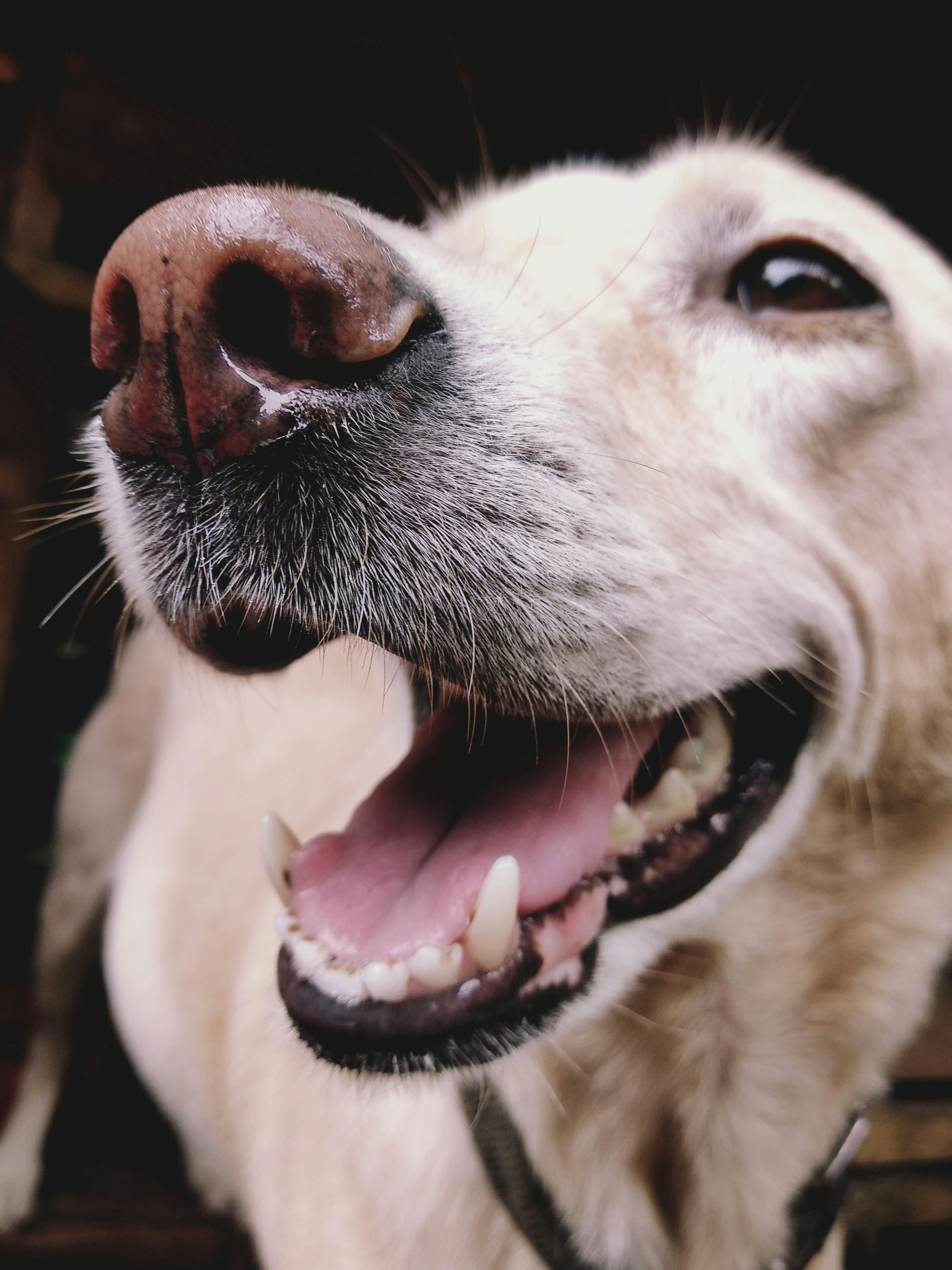
Have you ever noticed your dog’s nose and wondered why it’s wet? It’s a common sight for pet owners and one that brings about many questions. Is your dog’s nose wet? Learn what it means for their health! The truth is, a wet nose can indicate many things about your furry friend’s overall condition. Let’s delve into the fascinating truth behind why do dogs have wet noses and what it can signify.
Why Do Dogs Have Wet Noses?
Dogs have wet noses for several reasons, and understanding these can help you gauge your pet’s health. Here are some key points to consider:
Cooling Mechanism: Dogs don’t sweat like humans. Their primary way of regulating body temperature is through panting and having a moist nose. A wet nose helps them cool down more effectively.
Sense of Smell: The moisture on a dog’s nose enhances its ability to smell. The wetness traps scent particles, making it easier for dogs to pick up on odors. This is crucial since dogs rely heavily on their sense of smell to understand their environment.
Health Indicator: A healthy dog typically has a cool and damp nose. Changes in your dog’s nose, like it becoming dry or cracked, can sometimes signal health issues. It’s important to monitor these changes, as they could indicate dehydration, fever, or other health concerns.
The Science Behind the Wet Nose
Dogs’ noses are fascinating from a biological standpoint. They contain special glands that secrete a thin layer of mucus. This mucus plays a role in their olfactory abilities. Here’s a quick breakdown of the anatomy involved:
- Nasal Glands: Produce moisture.
- Olfactory Receptors: Help detect scents.
- Surface Area: Dogs have a larger surface area in their nasal cavities which contributes to their superior sense of smell.
What a Dry Nose Could Mean
Noticing a dry nose on your dog? Well, it might not always be a cause for alarm, but certain situations warrant closer attention. Here are various scenarios when a dog’s nose might be dry:
- Dehydration: If your dog isn’t drinking enough, their nose might dry out.
- Illness: Sometimes, a warm or dry nose can indicate fever or other health issues.
- Allergies or Irritation: Environmental factors can lead to a dry or irritated nose.
- Weather Conditions: Hot, dry weather can affect your dog’s nose just like it does ours.
Monitoring Your Dog’s Nose
It’s essential to keep an eye on your dog’s nose as part of regular health checks. Here’s a simple checklist to guide you:
- Is the nose cool and moist?
- Are there any cracks or sores present?
- Does the nose change temperature frequently?
- Are there any unusual discharge or colors?
Additional Factors Affecting Nose Moisture
Several factors can play a role in the moisture levels of your dog’s nose. Here’s a brief exploration of those:
- Diet: A well-balanced diet with enough water can keep your dog hydrated and maintain a healthy nose.
- Age: Older dogs may experience changes in their skin and coat, leading to drier noses.
- Health Conditions: Certain health issues, such as autoimmune diseases, can affect nose moisture levels.
- Breed: Some breeds naturally have drier noses than others. For example, brachycephalic breeds (like Bulldogs) may have different nasal moisture due to their facial structure.
Fun Facts About Dog Noses
Dogs are incredible creatures, and their noses are just as extraordinary! Here are some fun facts you might find interesting:
- Dogs have around 220 million olfactory receptors in their noses. Humans have only about 5 million.
- A dog’s sense of smell is 10,000 to 100,000 times more acute than that of a human.
- Dogs can even detect certain diseases like cancer or diabetes through scent.
Being aware of your dog’s nose condition can help maintain their health and happiness. Always consult with a veterinarian if you notice any significant changes or if you have concerns about your dog’s overall well-being. Remember, a wet nose is just one of many indicators of your pet’s health. Keep an eye on that adorable snout, and you’ll be well on your way to ensuring your furry friend lives a happy and healthy life!
Wet Noses and Dog Behavior: How Smell Plays a Role in Communication
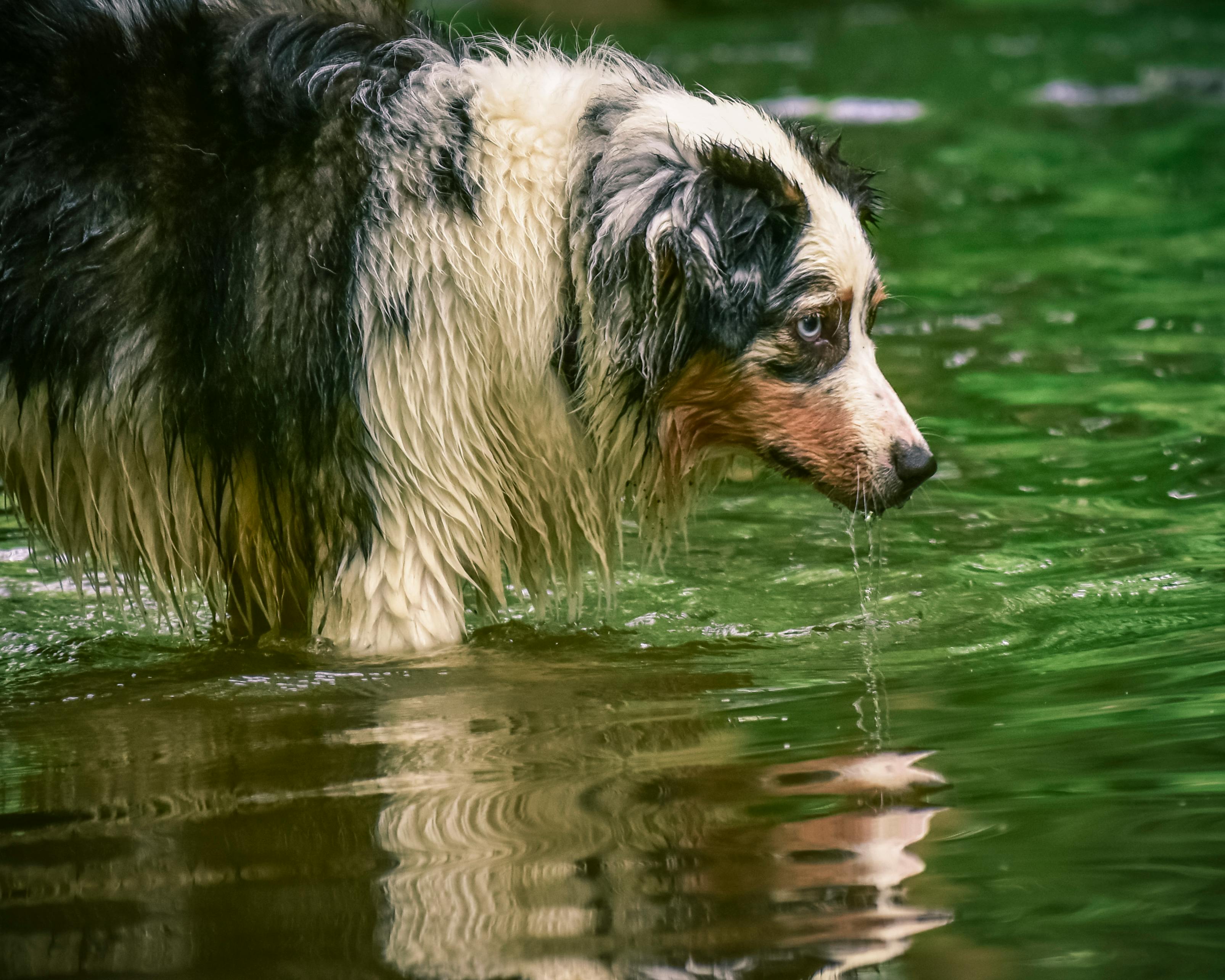
Dogs are fascinating creatures, and one of their most unique features is their wet noses. You ever wonder why do dogs have wet noses? It’s not just for show; there’s a lot more behind this little quirk. Dogs communicate in ways that are sometimes subtle, and their sense of smell plays a big role in this. Wet noses, it turns out, have a deeper significance in the world of canine behavior and communication.
The Science Behind Wet Noses
A dog’s nose is wet because of a thin layer of mucus. This is not just a random characteristic but serves several functions. First, it helps dogs to absorb scent particles in the air. When dogs sniff, moisture on their nose increases their ability to detect odors. This is why they can smell so much better than humans; their sense of smell is estimated to be anywhere from 10,000 to 100,000 times more sensitive!
- Wet noses help in:
- Absorbing scents
- Cooling down their bodies
- Maintaining moisture for better olfactory function
Evolutionary Context
Thinking about why dogs have wet noses also means looking back at their ancestry. Canines, like wolves, rely heavily on their sense of smell for survival. They use it to find food, identify territories, and communicate with other pack members. The wetness of the nose may have evolved as a beneficial trait that allowed early canines to thrive in their environments.
- Historically, dogs have been:
- Hunters and scavengers
- Social animals relying on scent for communication
- Pack animals with complex social structures
How Dogs Use Their Sense of Smell
Dogs do not just sniff for fun; it’s a critical part of their communication strategy. They pick up on various scents to understand their world. A dog can tell who another dog is by sniffing their urine, for example, and they can even sense emotions through scent.
- Dogs can detect:
- The presence of other animals
- Changes in human emotions
- Medical conditions, like low blood sugar or seizures
Smell and Communication
While barking and body language are essential for dog communication, the sense of smell is often the primary means. When a dog approaches another dog, the first thing they do is likely to sniff each other’s noses and behinds. This behavior is a way for them to gather information.
- Key points about canine communication:
- Scent is more reliable than vocalizations
- Dogs can recognize familiar scents over time
- The olfactory system is deeply intertwined with memory
Fun Facts About Dog Noses
You might find it interesting that no two dog noses are the same, much like human fingerprints. Each dog has a unique pattern of ridges and creases on their nose. Here are some other fun facts about dog noses:
- Dogs can sniff 40 different scents at once.
- A dog’s nose has approximately 300 million smell receptors, compared to human’s 5 million.
- Dogs can even detect certain diseases, like cancer, simply by smelling a person’s breath or skin.
Maintaining Your Dog’s Nose Health
A wet nose is usually a sign of a healthy dog, but sometimes it can indicate issues. If a dog’s nose becomes excessively dry or cracked, it might be a sign that something is wrong. Here are some tips for keeping your dog’s nose healthy:
Regularly check for:
- Dryness or cracking
- Changes in color
- Discharge or bleeding
Keep your dog hydrated and ensure they are getting proper nutrition.
Consult a veterinarian if you notice any persistent changes or abnormalities.
Understanding why do dogs have wet noses and how they communicate through smell can enrich your relationship with your pet. They rely on their noses for so much, and it’s a reminder that there’s a whole world out there that we humans can’t even begin to comprehend. Next time your dog greets you with a wet nose, remember it’s not just a cute gesture; it’s their way of saying hello and gathering all the information they can about you and their surroundings. Embracing this unique aspect of dog behavior can help you bond even more with your furry friend.
The Myth of the Dry Nose: What Your Dog’s Nose Temperature Really Tells You

Have you ever noticed your dog’s nose and wonder why it feels wet or dry? Many pet owners believe that a dry nose is a sign of illness, while a wet nose means a dog is healthy. But what does the temperature of your dog’s nose really tell you? Let’s dive into the fascinating world of canine noses and explore the myth of the dry nose.
The Temperature of a Dog’s Nose: What Does it Mean?
First off, it’s important to understand that a dog’s nose temperature can change for various reasons. A cold, wet nose is often perceived as a good sign, while a warm, dry nose raises concerns. But, the truth is a bit more complex.
Here’s some factors that can affect a dog’s nose temperature:
- Environmental Conditions: Hot weather or being in the sun can warm up your dog’s nose.
- Activity Level: After playing or exercising, your dog might have a warmer nose.
- Health Status: Illness can lead to a dry or warm nose, but not all dogs follow this pattern.
Why Do Dogs Have Wet Noses?
Now, let’s talk about the science behind those wet noses. Dogs have moist noses for a few reasons. First, it helps them sense the world better. A wet nose can trap more scent particles, allowing them to smell better. Dogs have up to 300 million scent receptors, compared to about 5 million in humans.
Here’s some benefits of wet noses:
- Enhanced Smell: A moist surface captures scent molecules more effectively.
- Cooling Mechanism: Dogs don’t sweat like humans do. Their wet noses help regulate body temperature.
- Health Indicator: While not a concrete measure, a wet nose can sometimes indicate hydration levels.
The Myths Surrounding Dry Noses
One common myth is that a dry nose always indicates a sick dog. This belief isn’t entirely true. While certain health issues can cause a dog’s nose to dry out, there are many reasons why a dog’s nose might be warm and dry without them being sick.
Here’s a list of possible reasons for a dry nose:
- Allergies: Environmental factors like pollen or dust can cause dryness.
- Dehydration: Just like humans, dogs can get dehydrated, affecting their nose.
- Age: Older dogs might experience natural changes that lead to a drier nose.
Historical Context on Dog Noses
Historically, dogs have been known for their incredible sense of smell. In ancient times, they were often used for hunting and tracking due to their keen olfactory senses. Different breeds have been developed with specific traits, and part of that includes the moisture levels in their noses.
For instance, bloodhounds are known for their tracking abilities, and their wet noses play a significant role in their hunting style. The wetness enhances scent detection, making them invaluable in search and rescue missions.
Comparing Dog Noses: Breeds and Moisture Levels
Not all dog noses are created equal. Some breeds naturally have drier noses than others. Below is a comparison table of various dog breeds and their typical nose moisture levels:
| Dog Breed | Typical Nose Moisture Level | Notes |
|---|---|---|
| Labrador Retriever | Wet | Known for their friendly nature |
| Bulldog | Dry | Can have seasonal dryness |
| Beagle | Wet | Excellent scent tracking |
| Dachshund | Varies | Nose moisture varies by individual |
| Poodle | Wet | Highly intelligent and smelling |
Practical Tips for Dog Owners
Keeping an eye on your dog’s nose is important, but it shouldn’t be the only indicator of their health. Here are some practical tips to maintain your dog’s health:
- Regular Vet Visits: Routine check-ups can help catch health issues early.
- Hydration: Ensure your dog has access to fresh water at all times.
- Observe Behavior: Changes in appetite, energy levels, or bathroom habits are more telling than nose temperature.
While the myth of a dry nose signifying illness persists, it’s essential to consider the whole picture. Always consult with a veterinarian if you’re worried about your dog’s health. They can provide more detailed insights into your pet’s specific needs.
Understanding why dogs have wet noses and debunking the myths surrounding them can help pet owners make informed decisions about their furry friends. So, next time you touch your dog’s nose, remember, it’s just one small part of a much larger picture!
7 Surprising Facts About Dogs’ Wet Noses That Every Dog Owner Should Know
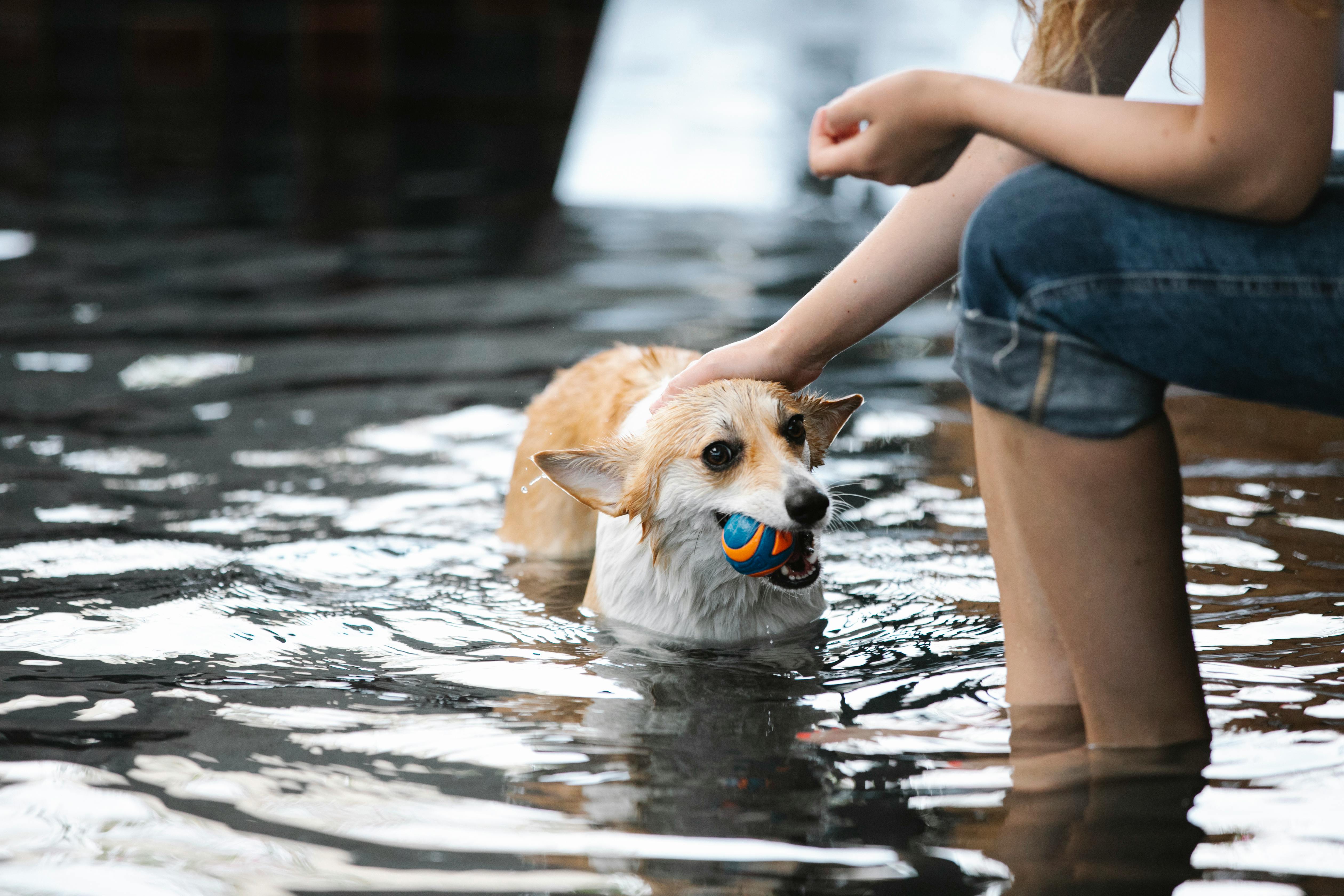
Dogs are often known as man’s best friend, and one of their most endearing traits is their wet noses. But have you ever stopped to wonder why dogs have wet noses? There’s actually a lot more to this characteristic than most people realize. Here are seven surprising facts about dogs’ wet noses that every dog owner should know.
1. Temperature Regulation
Did you know that a dog’s nose helps regulate their body temperature? Unlike humans who sweat to cool off, dogs don’t have sweat glands in the same way. Instead, they rely on their noses, which are moist, to help with thermoregulation. When a dog licks its nose, it cools down the air that they inhale, which helps to lower their body temperature.
2. Enhanced Sense of Smell
A dog’s sense of smell is far superior than humans, and their wet noses play a significant role in this. The moisture on the nose helps capture scent particles in the air. This makes it easier for dogs to smell things, which is why they often sniff around a lot. Here’s a quick comparison:
- Dogs: Estimated 300 million scent receptors
- Humans: Around 5 million scent receptors
3. Health Indicator
A dog’s nose can actually be a good indicator of their health. A healthy dog typically has a damp, cool nose. A dry nose can sometimes indicate dehydration or fever, although it’s not an absolute rule. Here’s a quick list of potential health indicators based on nose condition:
- Wet & Cool: Generally healthy
- Dry & Warm: Possible fever or dehydration
- Cracked or Flaky: Could indicate allergies or skin issues
4. Evolutionary Advantage
The evolution of a dog’s wet nose can be traced back to their ancestors. Wolves, for example, have wet noses that help them in hunting and tracking prey. The moisture helps them detect scents from a greater distance. This evolutionary trait has been passed down to domestic dogs, making their wet noses not just adorable, but also functional.
5. Unique Nose Prints
Just like human fingerprints, every dog has a unique nose print. The patterns of ridges and creases on a dog’s nose can be used to identify them. Some organizations even use nose prints for identification purposes. Isn’t that fascinating? Here are some fun facts about nose prints:
- Unique: No two dogs have the same nose print.
- Recognition: Can be used for identification like fingerprints in humans.
6. Social Interaction
Dogs also use their noses for social interaction. A dog may greet another dog with a sniff, which is a way of gathering information about the other dog. This behavior is rooted in instinct, as it helps dogs learn about their surroundings and the animals within it. Sniffing is a form of communication, almost like saying “hello” in dog language.
7. Nose Color Changes
Did you know that a dog’s nose color can change? While a dog’s nose is typically black or brown, some dogs can have a pink or spotted nose. Various factors cause these changes, such as exposure to the sun or even certain health conditions. Here’s a brief list of potential causes for nose color changes:
- Sun Exposure: Can lighten the nose color.
- Age: Older dogs may have lighter noses.
- Health Issues: Certain illnesses can cause discoloration.
Understanding why do dogs have wet noses can not only enhance your appreciation for your furry friend, but it can also help you monitor their health and well-being.
Next time you pet your dog or watch them sniff around, remember these surprising facts. A wet nose may be just one of the many adorable traits they have, but it also serves important functions that contribute to their health and behavior. So, embrace those wet kisses and cherish every moment with your canine companion!
How to Care for Your Dog’s Nose: Keeping It Wet and Healthy

Dogs are often called man’s best friend, and nothing says it better than their adorable, wet noses. If you ever wondered how to care for your dog’s nose and why it’s wet in the first place, you’re in for a treat. Understanding the nature of your dog’s nose can be beneficial not only for their health but also for your bond with them. So let’s dive into the fascinating world of canine noses!
Why Do Dogs Have Wet Noses?
You might be curious, why do dogs have wet noses, anyway? The answer is pretty interesting and involves some cool science. Dogs’ noses are wet for several reasons, including:
- Temperature Regulation: A wet nose helps dogs cool down. When the moisture evaporates, it cools their body.
- Enhanced Smell: The moisture in their noses helps to capture scent particles. This makes their sense of smell even better, which is essential for their survival instincts.
- Health Indicator: A dog’s nose can indicate their health. For example, a dry or cracked nose may suggest dehydration or illness.
How to Care for Your Dog’s Nose
Taking care of your dog’s nose is important but often overlooked. Here are some simple ways to keep it healthy and wet:
Hydration is Key: Make sure your dog has access to fresh water all the time. Dehydration can lead to dryness in their nose.
Regular Checks: Inspect your dog’s nose regularly for cracks, dryness, or sores. If you notice anything unusual, consult a vet.
Avoid Harsh Chemicals: When cleaning your home, avoid using harsh chemicals that may irritate your dog’s nose. Opt for pet-friendly products instead.
Use Nose Balm: If your dog has a dry nose, consider using a nose balm specifically designed for pets. This can help keep the nose moisturized.
Monitor Allergies: Dogs can have allergies just like humans. If you notice excessive sneezing or a runny nose, it might be time for a vet visit.
Fun Facts About Dog Noses
Did you know that a dog’s nose print is unique, just like human fingerprints? Here are some more fun facts about these fascinating features:
- Dogs have up to 300 million smell receptors in their noses—humans only have about 5 million.
- The surface of a dog’s nose is covered with a thin layer of mucus, which helps them smell better.
- Different breeds have different nose shapes, which can affect their sense of smell. For example, Bloodhounds have a very keen sense of smell thanks to their long, droopy noses.
How to Recognize Nose Problems
Sometimes, a dog’s nose can be a window into their overall health. Here’s what to watch for:
- Dryness or Cracking: This can indicate dehydration or other health issues.
- Discoloration: If the nose changes color, it might be a sign of something more serious.
- Excessive Mucus: A runny nose may suggest allergies or infections.
Common Misconceptions About Dog Noses
Many people believe that a warm nose means a dog is sick, but that’s not always true. Here are some misconceptions clarified:
Misconception vs. Reality
- Warm Nose = Sick Dog: This is not always the case. A dog’s nose temperature can fluctuate throughout the day.
- Wet Nose = Healthy Dog: While a wet nose is often a good sign, it doesn’t guarantee health. Other symptoms should also be considered.
- Dry Nose = Always Dehydrated: A dry nose can occur for various reasons and doesn’t always mean your dog is dehydrated.
Practical Tips for Nose Care
Here’s a summary of practical tips you can easily follow:
- Always provide plenty of water.
- Avoid exposing your dog to extreme weather conditions.
- Be mindful of their diet, as nutrition can affect their skin and nose health.
- Regular vet check-ups can help catch any potential problems early.
In summary, understanding why dogs have wet noses and knowing how to care for them can keep your furry friend happy and healthy. By paying attention to their needs and looking out for signs of distress, you’re ensuring that your dog remains a loyal companion for years to come. So, the next time you give your dog a scratch behind the ears, don’t forget to check that adorable, wet nose!
Wet Nose Wonders: How Dogs Use Their Sense of Smell to Navigate the World
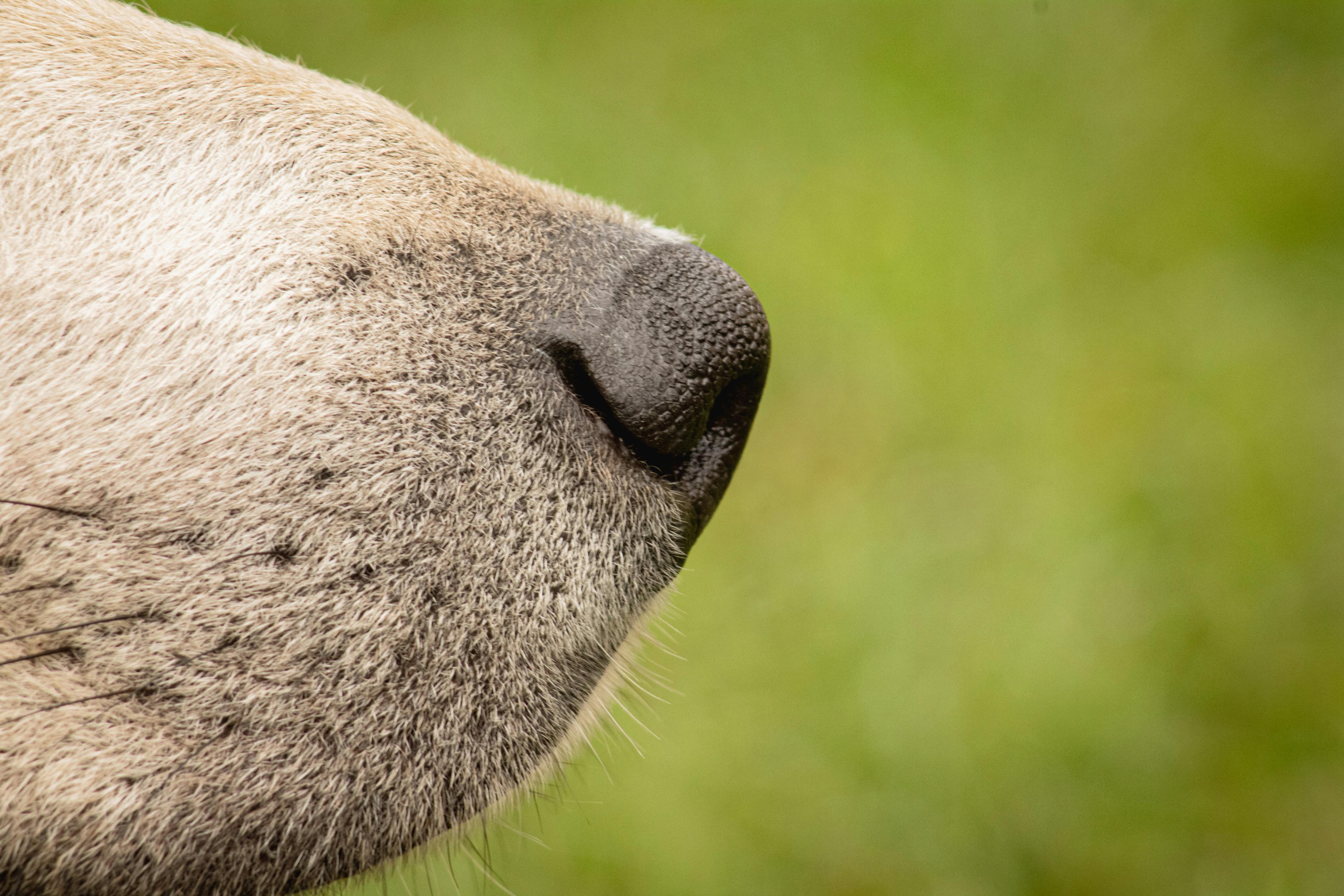
Dogs have always been known for their incredible sense of smell. It is said that dogs can smell about 10,000 to 100,000 times better than humans. This extraordinary ability helps them navigate the world, detect danger, and even find lost objects. But have you ever stopped to wonder why do dogs have wet noses? This question leads us down a fascinating path into the world of our canine companions and their unique olfactory powers.
The Science Behind a Dog’s Sense of Smell
Dogs have a complex olfactory system that consists of about 300 million smell receptors. In comparison, humans only have around 5 million. When a dog sniffs a scent, it activates these receptors, sending signals to the brain. The part of a dog’s brain dedicated to analyzing smells is 40 times larger than that of humans. This means dogs are able to detect and differentiate an astonishing array of scents.
Here’s a quick breakdown of how dogs use their sense of smell:
- Detection: Dogs can smell chemicals, drugs, and even diseases like cancer.
- Navigation: They can track scents over long distances, which helps them navigate their environment.
- Communication: Dogs also use their sense of smell to communicate with each other, gathering information about other dogs through scent markers.
Why Do Dogs Have Wet Noses?
Now, let’s dive into the wet nose question. You might have observed your dog’s nose feels cool and wet. But why is this? There are few reasons for this phenomenon.
Enhanced Smelling Ability: A wet nose helps to enhance a dog’s sense of smell. The moisture on the nose traps scent particles, making it easier to pick up different odors. This is like how a sponge absorbs water; the wetness makes it more effective at soaking up scents.
Thermoregulation: Dogs don’t sweat like humans do. Instead, they cool themselves off through panting and sometimes by their wet noses. The moisture on the nose evaporates, which helps regulate their body temperature.
Health Indicator: A dog’s nose can also be a health indicator. A healthy dog usually has a moist nose, while a dry or cracked nose can signal illness or dehydration.
Historical Perspective on Dogs’ Noses
Historically, dogs have been bred for their sense of smell. For instance, bloodhounds are known for their tracking abilities, while retrievers are bred for finding and retrieving game. The lineage of these breeds comes from their early roles as hunters, protectors, and companions.
Interesting Facts About Dogs’ Noses
- Dogs’ noses come in various shapes and sizes, but they all serve the same basic functions.
- The unique patterns on a dog’s nose are like fingerprints for humans; no two dogs have the same nose print.
- Dogs have a special organ called the Jacobsen’s organ, located on the roof of their mouth, which helps them detect pheromones.
Practical Examples of Dogs Using Their Sense of Smell
Here are some real-life scenarios where dogs’ sense of smell plays a crucial role:
- Search and Rescue: Dogs are used in search and rescue operations to locate missing persons. Their ability to track scents is invaluable in these situations.
- Medical Detection: Certain breeds, like Beagles and German Shepherds, are trained to detect medical conditions such as diabetes and even some cancers.
- Law Enforcement: Police dogs are trained to sniff out drugs, explosives, and even locate suspects.
Comparisons: Dogs vs. Other Animals
When we compare dogs to other animals, their sense of smell is astonishing. Here’s a simple comparison table:
| Animal | Number of Smell Receptors | Smelling Ability Compared to Humans |
|---|---|---|
| Humans | 5 million | Baseline |
| Dogs | 300 million | 10,000 – 100,000 times better |
| Elephants | 2,000,000 | 400 times better |
| Rats | 1,200,000 | 240 times better |
The differences in the number of smell receptors highlight why dogs excel in tasks that involve scent detection.
Dogs are remarkable creatures, and their wet noses are just one of the many fascinating features that contribute to their incredible ability to navigate the world. Understanding why do dogs have wet noses not only enriches our knowledge about them but also helps us appreciate the bond we share with these loyal companions. Whether they are sniffing out a hidden treat or simply enjoying the smells of the great outdoors, dogs continue to amaze us with their olfactory talents.
What Makes a Dog’s Nose Wet? The Role of Mucus and Temperature Regulation
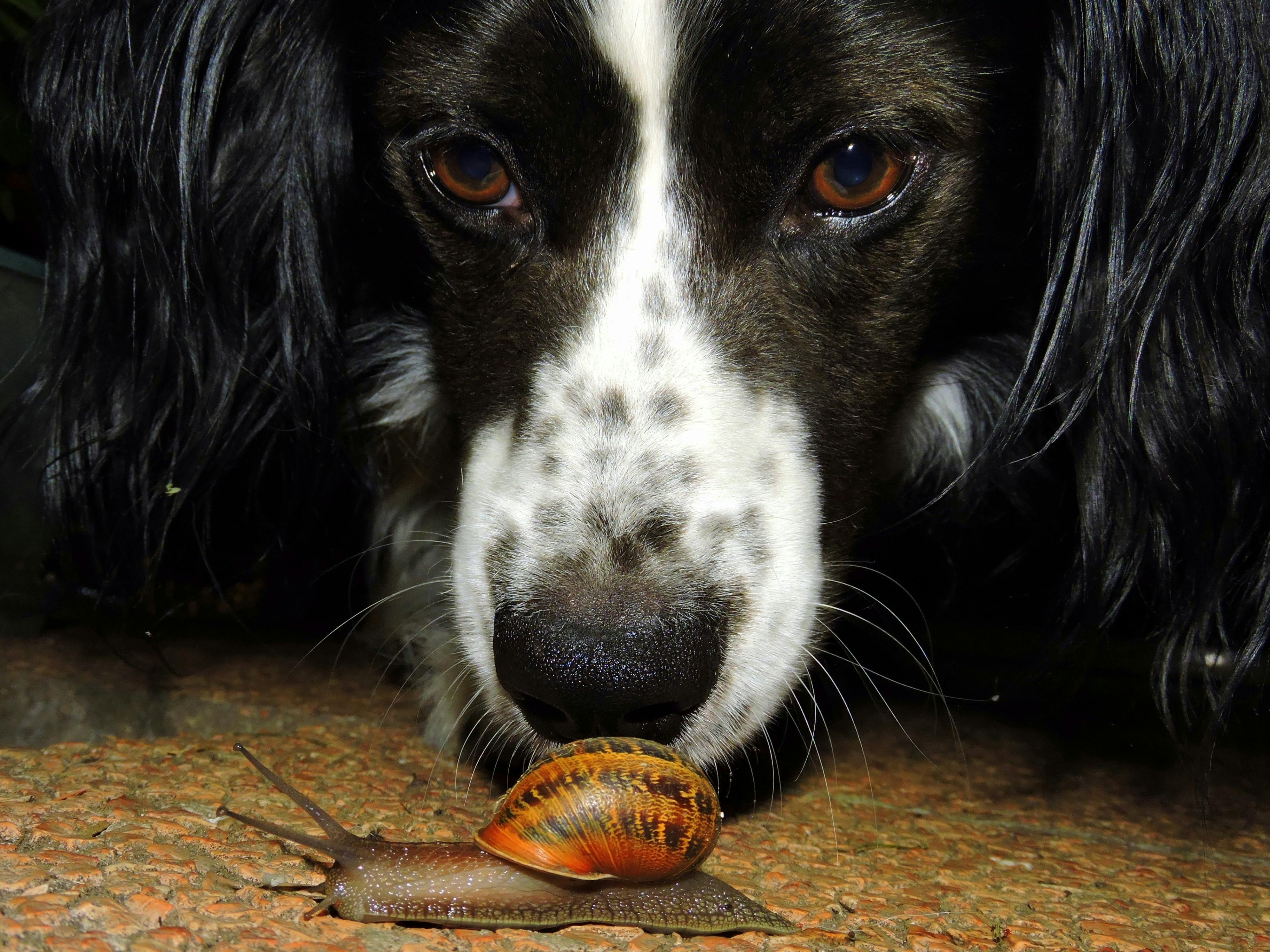
Have you ever wonder why dogs have those adorable wet noses? It’s one of those quirky features that makes our furry friends so charming. But, there’s actually more to it than just cuteness. The wetness of a dog’s nose plays a significant role in their health and well-being. Let’s dive into the fascinating truth behind why do dogs have wet noses and the science that backs it up.
The Role of Mucus in Moisture
You might think that a dog’s nose is just naturally moist, but it’s actually thanks to mucus. This mucus is produced by glands in the nose and serves several important functions. Here’s some key points about the role of mucus:
- Scent Detection: A wet nose helps capture scent particles from the air. When mucus covers the surface, it allows the particles to stick, which helps dogs smell better.
- Temperature Regulation: Mucus also helps in cooling down the dog’s body. When the air evaporates from the moisture, it can lower the dog’s body temperature. This is similar to how we sweat to cool down.
- Protection: Mucus acts as a barrier against dust, dirt, and other particles. It keeps the nasal passages clean and helps prevent infections.
Dogs have evolved to have these wet noses for a reason. The mucus is crucial for their survival, helping them to find food, detect danger, and maintain their health.
Temperature Regulation and Its Importance
Dogs don’t sweat like humans do. Instead, they rely on their noses and panting to regulate their body temperature. A wet nose plays a significant role here. When a dog gets hot, the moisture on their nose evaporates, which cools the blood flow to their brain. This is how the temperature regulation works:
- Evaporation: When the moisture on the nose evaporates, it cools the air around it. This helps to lower the overall body temperature.
- Breathing: Dogs often breathe through their noses. A cooler nose can help cool the air they inhale, which can also assist in regulating their internal temperature.
Why Do Dogs Have Wet Noses?
So, why do dogs have wet noses? The answer is a combination of biology and evolution. Wet noses are not just for show; they are essential for a dog’s health and functionality. Here are some important reasons:
- Enhanced Scent Detection: As mentioned, the wetness helps capture scent particles, making dogs excellent at tracking and sniffing out scents.
- Health Indicator: A wet nose is often a sign of a healthy dog. If a dog’s nose becomes dry and hot, it could indicate illness or dehydration.
- Social Interaction: Dogs use their noses to communicate and interact with each other. A wet nose can be a friendly gesture when greeting other dogs or humans.
A Little History on Dog Noses
Did you know that dogs have been companions to humans for thousands of years? Their incredible sense of smell has been utilized in various ways, from hunting to search and rescue missions. Here’s a quick look at how dog noses have been historically significant:
- Hunting Partners: Early humans relied on dogs to help track and hunt animals. A wet nose helped them detect scents from a distance.
- Rescue Operations: In more recent history, dogs have been trained for search and rescue missions, highlighting how important their sense of smell is.
- Medical Detection: Some dogs can even detect diseases like cancer or diabetes just by sniffing, showing how their wet noses play a critical role in human health.
Fun Facts About Dog Noses
Here are some fun and interesting facts about dog noses that you might not know:
- Unique Patterns: Just like human fingerprints, every dog’s nose has a unique pattern of ridges and creases.
- Temperature Sensitivity: Dogs can detect changes in temperature and humidity through their noses, making them incredibly sensitive to their environments.
- More than 300 Million Olfactory Receptors: Dogs have about 300 million olfactory receptors compared to humans who have around 5 million. This makes their sense of smell far superior.
By understanding why dogs have wet noses, we gain insight into their health, behavior, and evolution. The moisture not only enhances their sense of smell but also plays a crucial role in temperature regulation and protection. Next time you pet your dog, take a moment to appreciate that wet nose and what it represents! It’s a small but important part of what makes dogs such incredible companions.
Can a Wet Nose Indicate Illness in Dogs? Signs to Watch For

Can a Wet Nose Indicate Illness in Dogs? Signs to Watch For, Why Do Dogs Have Wet Noses? Discover the Fascinating Truth, why do dogs have wet noses
Dog owners often wonder about their canine companions’ health, and one common question is whether a wet nose can indicate illness in dogs. While a wet nose is a typical feature of many dogs, it’s essential to understand what it means and what signs to watch for. So, let’s dive into the world of dog noses, the fascinating reasons behind their moisture, and whether a wet nose could be a red flag for illness.
Why Do Dogs Have Wet Noses?
Dogs have wet noses for several reasons, and it’s not just a random quirk of nature. The moisture on a dog’s nose serves multiple purposes, including:
- Enhanced Sense of Smell: A wet nose helps to absorb scent chemicals. This moisture allows dogs to smell better, making them excellent hunters and companions.
- Temperature Regulation: Dogs can’t sweat the same way humans do. A wet nose helps cool them down when it’s hot, acting like a natural air conditioner.
- Health Indicator: The state of a dog’s nose may reflect their overall health. A healthy dog usually has a moist, cool nose, while a dry or cracked nose might suggest dehydration or illness.
Historically, dog noses have always been a topic of interest among veterinarians and pet owners. Ancient cultures believed that a dog’s nose could predict weather changes, showing just how long humans have been fascinated by these furry friends.
Can a Wet Nose Indicate Illness?
While a wet nose is generally a sign of good health, it’s not a foolproof indicator. There are many factors to consider. Here are some signs to watch for:
- Dry or Cracked Nose: A dry nose can suggest dehydration, fever, or a potential illness. If your dog’s nose is usually wet and suddenly becomes dry, it’s time to investigate.
- Excessive Discharge: If there’s a significant increase in discharge from the nose, it could indicate allergies or a respiratory infection.
- Changes in Temperature: A nose that is hot to the touch may indicate a fever. If it feels warm and dry, this could be a red flag for underlying health issues.
- Behavioral Changes: If your dog’s behavior changes — like a decrease in appetite or energy levels — along with a wet or dry nose, it’s worth consulting a veterinarian.
Signs of Illness in Dogs
When monitoring your dog’s health, it’s crucial to look beyond just the nose. Here are some common symptoms of illness in dogs to keep an eye on:
- Change in Appetite: Eating less or refusing food can be a sign of several health issues.
- Lethargy: If your dog is not as active as usual or seems tired all the time, it could be a concern.
- Vomiting or Diarrhea: These symptoms can indicate gastrointestinal problems, which can be serious.
- Coughing or Sneezing: Persistent coughing or sneezing might point to respiratory problems.
- Weight Loss: Sudden weight loss without changes in diet or exercise can be alarming.
Comparing Wet and Dry Noses
Here’s a simple comparison table regarding wet and dry dog noses:
| Characteristic | Wet Nose | Dry Nose |
|---|---|---|
| Temperature | Cool to the touch | Warm or hot to the touch |
| Health Indication | Generally healthy | May indicate illness |
| Moisture Level | High moisture | Low moisture |
| Scent Absorption | High scent absorption | Lower scent absorption |
| Common Causes of Change | Normal variations, excitement | Dehydration, illness |
Practical Examples of Dog Nose Conditions
- Kennel Cough: A dog with a wet nose but a persistent cough may have kennel cough, a contagious respiratory disease.
- Allergies: If your dog has a wet nose and is sneezing or scratching, they may be experiencing allergies.
- Fever: A normally wet nose that feels warm could indicate a fever, requiring further examination by a veterinarian.
Being aware of these signs can make a big difference in your dog’s health. Regular check-ups with a vet are also important, as they can provide insights into your dog’s overall well-being.
In summary, while a wet nose is often a sign of good health, it’s essential to pay attention to other symptoms and changes in behavior. Your dog’s nose can tell you a lot, but it’s just one piece of the puzzle. By staying observant and proactive, you can ensure your furry friend remains happy and healthy.
Conclusion
In conclusion, the wet noses of dogs serve several important purposes that contribute to their overall health and sensory capabilities. The moisture on a dog’s nose helps enhance its sense of smell by capturing scent particles, making them more perceptive to their environment. Additionally, a wet nose aids in temperature regulation, allowing dogs to cool down more efficiently. The presence of moisture also plays a role in their communication, helping to convey emotions and social signals to other dogs and humans alike. Understanding the significance of a dog’s wet nose not only deepens our appreciation for these beloved pets but also emphasizes the importance of regular health checks to ensure their well-being. Next time you greet your furry friend, take a moment to appreciate their unique physiology and consider how you can support their health with proper care and attention.

